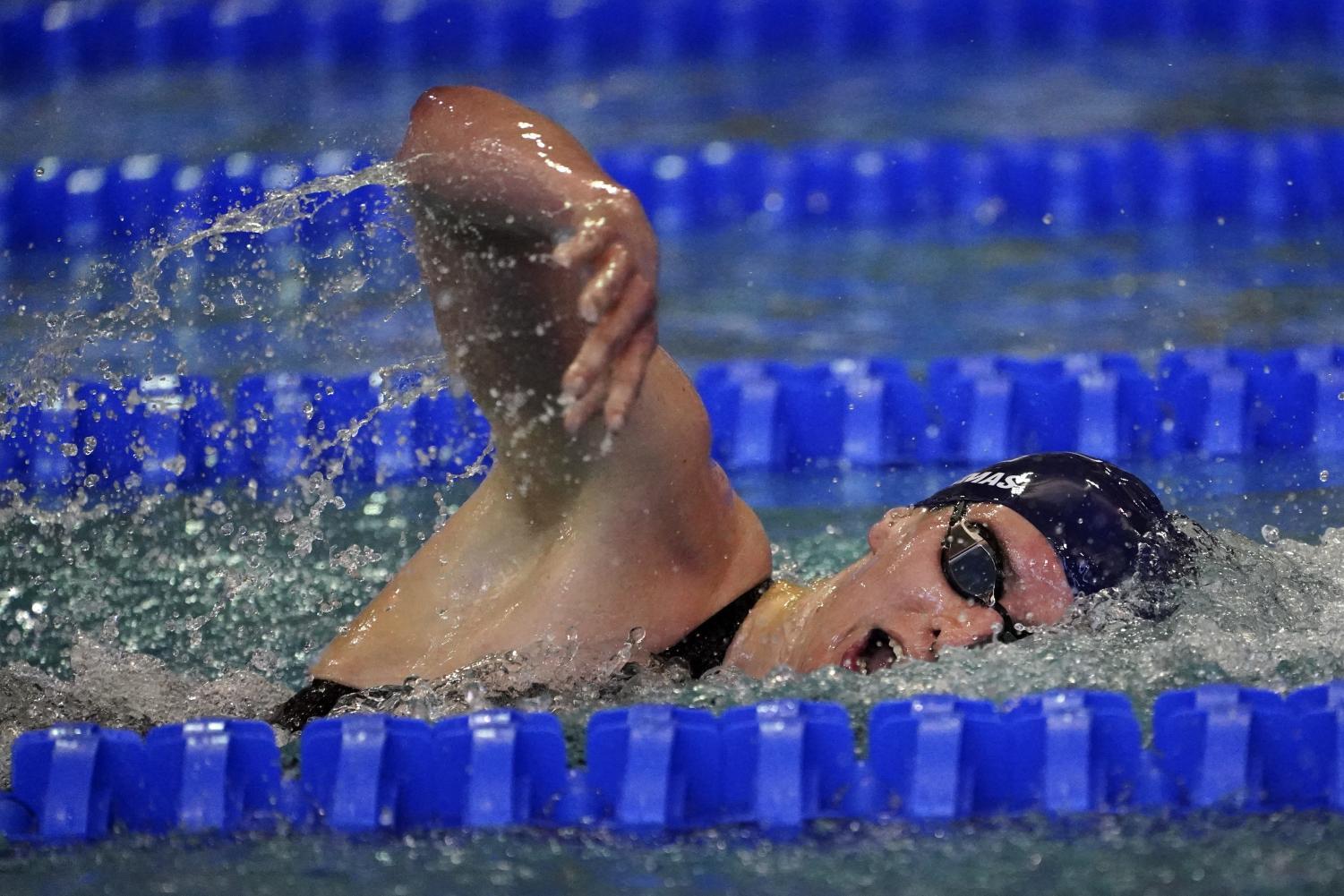Opinion | USA Swimming’s new transgender athlete rule is necessary but lacks research


University of Pennsylvania senior swimmer and transgender athlete Lia Thomas competes in the 500-yard freestyle at the NCAA Swimming and Diving Championships at Georgia Tech in Atlanta on Thursday.
USA Swimming announced a new rule on Feb. 1 saying that in order to be considered for elite competitions, a transgender woman athlete must pass through a panel of three independent medical experts who will weigh the question of whether or not the “prior physical development of the athlete as a male” is a disproportionate advantage over cisgender females.
Additionally, the athlete must also have testosterone levels below five nanomoles per liter for 36 months before registering for competition, almost double the top end average of 2.4 nanomoles per liter for women.
While this new rule establishes requirements for the highly debated question of transgender athletes’ participation in women’s sports, it fails to consider the lack of scientific research on their potential advantages.
Particularly in swimming, the difference between a biological male and a biological female’s results at the elite level is quite drastic. According to data used in USA Swimming’s announcement, the fastest female in 2021 would place 536th across all short course male events. The fastest female in long course events would place 326th in the male category. Having such disproportionate results between cisgender females and males proves the biological advantage that individuals born as males have in swimming competitions.
Lia Thomas, a transgender athlete from the University of Pennsylvania, has been very successful in the pool. Thomas competed in the Ivy League Swimming and Diving Championships in February, breaking six records and winning three individual events. Additionally, on Thursday, Thomas became the first openly transgender woman to win an NCAA swimming championship. Thomas’ success shows that athletes born male and transitioned female at the elite level can have great success.
Thomas’ success has affected cisgender female athletes. Many who follow the sport of collegiate swimming, including parents and coaches, have voiced outrage over Thomas’ success. They believe cisgender girls swimming against Thomas are at a biological disadvantage. However non-inclusive and vulgar some of these comments may be, the ever growing trophy shelf for Thomas suggests a gap in performance between Thomas and her competitors.
Where USA Swimming goes wrong with this rule is in the implementation and requirements. USA Swimming provides a one-sentence explanation for medical experts to consider the “evidence that the prior physical development of the athlete as a male, as mitigated by any medical intervention, does not give the athlete a competitive advantage over the athlete’s cisgender female competitors.” This is too open-ended and leaves the decision-making vulnerable to personal biases. There needs to be more research on the question of whether or not transgender athletes have a clear advantage and what an advantage really means.
Secondly, there’s the testosterone test that requires a transgender athlete be below five nanomoles per liter for 36 months before applying for the competition, even though measuring testosterone levels is highly unpredictable. For biological males, the average is 10 to 35 nanomoles per liter and for biological females, it is 0.5 to 2.4 nanomoles per liter. These numbers can fluctuate throughout time due to age, illness and many other factors, meaning medical experts can’t conclude a precise average.
Studies on athletes have also found that 25.4% of male athletes had testosterone levels below 10 nanomoles per liter while only 4.8% of women had levels above 10 nanomoles per liter. The data proves why measuring testosterone levels can yield scattered results. This is an issue because having higher testosterone is shown to boost an athlete’s performance. USA Swimming setting their requirement at five nanomoles is an educated guess at best in regards to performance.
More research needs to be done to better understand the performance of transgender athletes in swimming and other sports. USA Swimming implemented this rule following a trend set by many organizations before them, including the NCAA most recently in January. This speaks to the necessity of having a fair and equal field of play, but reveals the lacking research necessary for a consensus.
Inclusivity should be the main priority for sports, but without the fairness of competition, there would be no sports as we know them.
Ben Mankowski primarily writes about politics, economics and personal advice. Write to him at bgm29@pitt.edu.
Recent Posts
SGB introduces new governing code bill and addresses rumors of ICE on campus
At its weekly meeting at Nordy’s Place on Tuesday, Student Government Board introduced an omnibus…
Opinion | School should be in the summer
Although this may be controversial, I believe that from this data, it is evident that…
Weathering the storm: Pittsburgh teams have tackled some of the toughest environments
The end of the year in western Pennsylvania is always marked by two things —…
Notes From an Average Girl // Notes on Book Banning
In this edition of Notes From an Average Girl, senior staff writer Madeline Milchman writes…
To Be Honest // Yup, it is that damn phone
In this edition of To Be Honest, staff writer Evin Verbrugge writes about her phone…
Meaning at the Movies | Portraying Toxic ‘Adolescence’
In this edition of Meaning at the Movies, staff writer Lauren Deaton explores the mini-series…

